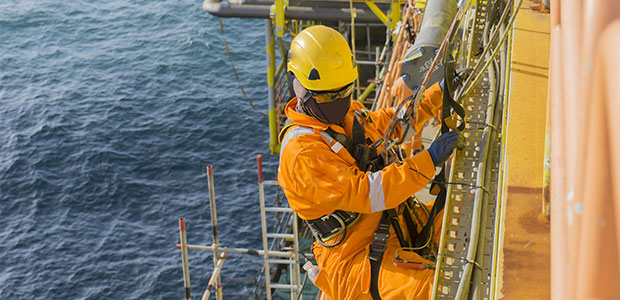
Protecting Lone Workers in Oil & Gas
A number of industries require workers to work alone—and the oil & gas industry is high on the list. Learn how to best protect your lone workers, but especially those doing the dirty work.
A lone worker is just as important as any other worker—but his or her risk to injury is much higher. One article by SafetyLine gives some helpful tips on protecting workers alone on the job while keeping a company’s budget in check.
First, however, it’s important to understand that there are a number of different types of lone workers. A worker is considered to be working alone if the worker works by himself or herself at a work site in circumstances where assistance is not readily available when needed.
There are five categories for working alone:
- Workers who do hazardous work away from the public, like field service operators. These workers often do checks in remote locations, work in confined spaces or are separated from other operatives by physical barriers. They face very dangerous hazards since assistance may not be readily available.
- Workers who travel away from the office and interact with their customers, like home care workers and social service workers. Employees in these situations are at a higher risk of experiencing violence in the workplace when interacting with new clients or be in a vulnerable position during transportation to and from the office.
- Workers who travel alone but have no interaction with customers, like truck drivers. These workers are at risk of accidents, injury or sudden emergencies that could be dangerous if no response is given.
- Workers who handle cash, such as taxi drivers, and gas station attendants. These workers could also be at risk of violence in their workplace, including threats toward their person, robberies or other dangerous behavior that would need an emergency response.
- Workers alone at an isolated site, such as security guards. These workers are at heightened risk of violent attack by people or animals because their site is isolated from public view or in a remote area.
- Working from home are considered lone workers. An employer is also responsible for the safety and health of employees regardless if they work from home. The employer should accept liability for accident or injury of a workers who is working from home.
The oil & gas industry has a number of circumstances where a worker might be working alone, and it’s important to understand how you can best protect them as an employer. Oil and gas workers face all kinds of risks on the job like slips and falls, electrocution, falling objects, cuts and burns, and toxic and flammable gas exposure—any of which could be fatal.
Before strategizing safety measures, though, there’s a budget to consider.
When looking at options for lone worker safety, safety options range from service providers to dedicated equipment. SafetyLine says while “dedicated devices have unique strengths, purchasing a service is the most flexible option.” Remember, too, that single-purpose devices will need replacing over time.
You also have options for service providers. Many call centers bill based on usage, leading to bigger expenses as usage increases. In comparison, software solutions can give you unlimited access. If you know your total cost and company budget in advance, you can increase your workers’ safety while keeping your budget in check.
It’s important to bring your safety equipment with you, of course, or seek ways to get the devices you need. If you’re already set up for communication at an IS work site, you’re probably set with equipment. If you don’t have equipment, software solutions let you choose devices that get used for more than just safety.
Cloud-based computing and wireless, mobile technology have created a new era of safety for lone workers. In today’s interconnected world, safety managers can receive a constant stream of real-time data on a lone worker’s exact location as well as their biophysical and atmospheric conditions.
Devices that can use software monitoring include phones, smartphones, satellite devices and computers. Each of these communication tools provide unique benefits. Make sure you research which tools are best for your site and employees.